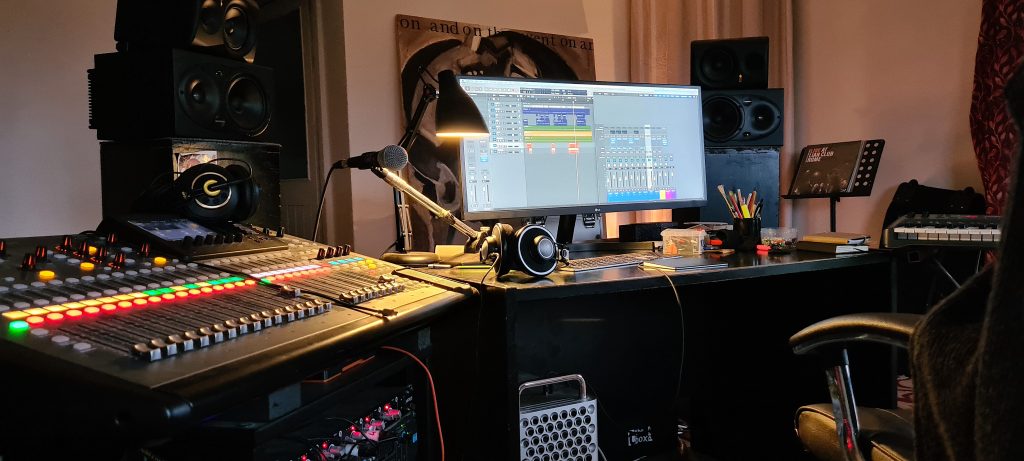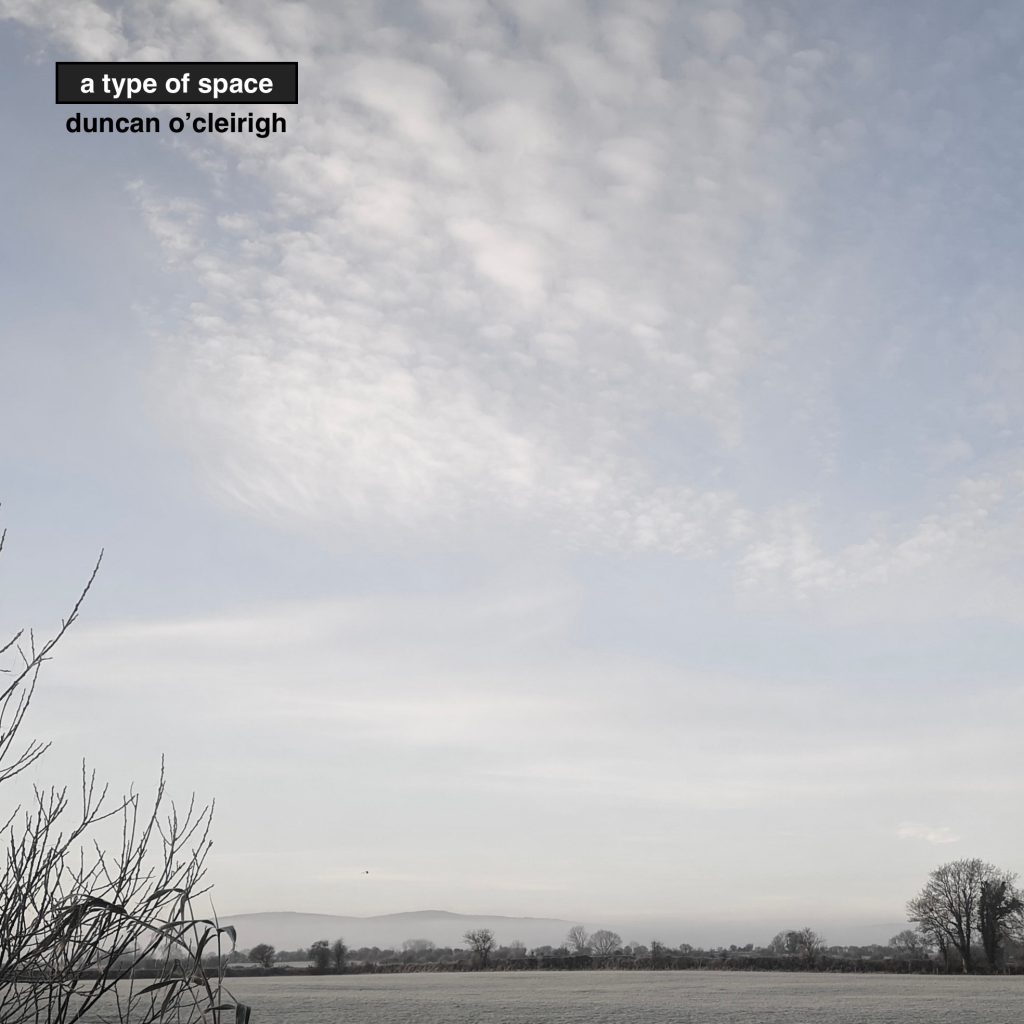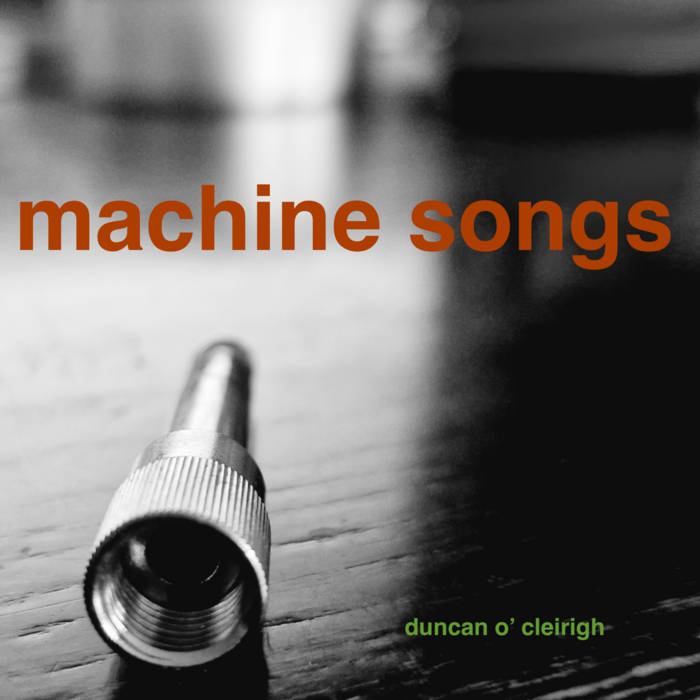
welcome
I work with sound.
Sometimes as a producer, sometimes as an engineer.
Sometimes
I make sound art, sometimes I write music.
Hearing and listening are not the same thing.
While we may hear a multitude of sounds in our daily lives, true listening requires deeper attention and understanding.
Sound Art/Experimental
I record sound, alter it, cut it up, blend it and piece it back together in new forms. Collaboration with musicians and artists is at the heart of what I do. I grew up in the countryside near the sea, and now live in the countryside further inland. This contrasts with many years spent living in cities and towns when I was younger.
My work explores the connections between our environment and the sounds that it produces, and ourselves and the sounds that we cause to happen. This includes the immediate environments we inhabit and place ourselves into – our homes, our workplaces, where we socialise – and also the wider impact of our choices on the world around us. I try to raise questions or at least draw attention to different aspects of this relationship.

This collection of pieces explores the idea of space; both the outer spaces we see and the inner spaces they open within us. Each work begins with a photograph: a view from my home in rural County Cork, Ireland, where I have lived for over twenty years. These images are not just records of a scene, but invitations into reflection, calm, and beauty.
From each photograph, I extract data that generates random sequences of notes. Out of these, fragments become apparent, sequences that feel alive in some way, or suggestive of atmosphere. This provides a sonic palette that is then arranged and manipulated to create shifting textures of sound.
Some pieces also include field recordings made at the time and place of the photograph. Birds, dogs, cattle, wind, distant farm machinery, sounds I hear every day. These also become part of the same sonic space as the transformed notes.
What emerges is less a direct translation of image to sound than a way of inhabiting it. Each piece becomes a space in itself: a place to pause, to listen, to wander inward while remaining rooted in the world outside.
The Universal Language
While studying an MA in Experimental Sound Practice in UCC, I started to explore the idea of extended drone-like sounds. Further experimenting lead to the idea of a piece made entirely from voices.
Often when people hear music, it is the sound of the voice, the melody, or the instrument that draws them even if they do not understand the words. Singing is one of the oldest ways in which we make music.
The idea of using a choir to be the source of the voices came about as a result of a chat between myself and Fermoy International Choir musical director Lisa Dunphy.
The choirs’ inclusive, positive ethos really fitted with the idea of a universally understood, voice based sound art installation. This project celebrates our common humanity.
It also celebrates community. Diverse, bustling and bubbling with life. We all have similar cares and joys in life. We are all one.
This piece has no words. It changes and shifts. Does it have a beginning or end? You are invited to sit in the physical space. Let the sounds wash past you. It provides a sonic space to reflect on our shared humanity.
Take a little time.
Pause, listen and think.
Everone needs a robot hoover
‘Everyone Needs A Robot Hoover’ is a soundmap of an area near Kilworth in County Cork known locally as ‘The Camps’. It is a public amenity overlaid on an area owned by the Irish Army. Part of this area is used as a firing range resulting in a rich tapestry of history full of contrasts and contradictions. The accompanying slideshow drifts from one image to another, it is not intended as a direct representation of what is audible at any point in time but more as an impressionistic representation of the area throughout the year, a memory or dream.
Machine songs

O! look How Far We’ve Come
Score
Using an electric toothbrush in a manner similar to a mouth harp, perform the main theme to Seán O’Ríadas work ‘Mise Éire. It would be best to perform this while standing in The O’Riada Hall of UCC Music Department but this is not vital. Ensure that an added Fluoride style toothpaste is used.
This piece is rooted in the Fluxus tradition of performance pieces. The composer Seán O’Ríada was a leading light in the music department of University College Cork from 1963 until his death in 1971. Amongst his most well known works is the musical score he wrote in 1959 for a documentary about the founding of the modern Irish State ‘Mise Éire’.
other work
“…and You can have music (dept.) wherever You go…”
This piece started out as an observation on the soundmarks that I noticed in the Music department of UCC.
One of the things I realised was that there is a distinctive series of them that are unique to the building. The department is in the former Missionary House adjoining St. Vincent’s Church in Sundays Well. It is an old building and much of the structure isn’t particularly soundproof. It used to be home to a religious order and the architecture and acoustics reflect this, in the case of sound quite literally! Walls are painted with colours/finishes typical of buildings owned by religious orders throughout the country, hard wearing, washable.
My first classes in the Bax room used the old refectory table that the order had used. Down in the basement the original stone floor is still visible in the corridor beside O’Riada Hall. There was a time when most large educational institutions resembled this building, but that is fading into memory. Nowadays it is where new horizons of music are studied while the past surrounds us all the time.
Anyone that has spent time in the Department as a student will have noticed at least some of these soundmarks. Sitting in the canteen on a quiet morning the sound of two pianos being practised simultaneously in a couple of rooms a few doors down the hall. Even in the toilets it’s not uncommon to hear a group rehearsing in the recording studio on the floor below.
Tucked away in the secret cave on the mezzanine floor that is M1, a student from practises the harp, picking out “ Tá na Lá” hesitantly, while the sound of someone else practising below in the Gamelan room leaks up through the floor.
Sometimes it’s musical chaos, usually on the top floor when several Traditional Irish soloists practise at the same time in rooms next to each other, while a floor below someone else practises scales on a piano. On a ground floor corridor there is the overbearing hum of… The Departmental Vending Machine (!) Voices echo up and down the stairwells as footsteps clack upon the steps.
More recently there has been a push to modernise the building, making it more accessible and safe for students and staff. This has added some new sounds. Newly installed firedoors close with a distinctive long creak and bang. The new lift manages to tell us about doors opening and closing, going up and down etc with equal blandness both in English and as Gaeilge. Shoes make a characteristic squelching sound on newly covered corridor floors.
The sounds and images in this piece were recorded between January and April 2024. I had actually started to record snatches like the ones used during the previous semester as well, but as these contained specific references etc. I felt it best not to use them. They were recorded “on the fly” using a Samsung S22 smartphone, as and when sounds caught my attention. Some of my fellow students may even remember me doing these recordings.
However as I made the piece I realised that it wasn’t what I had thought. It is in fact a kind of gift or a gesture. It is for a specific audience. Most of the postgraduate students that I have encountered are from other parts of the world. They will more than likely leave Cork when they complete their studies. Time will pass, maybe they will return to Cork and the music department, maybe they will not. But even if they do, it is probable that the soundmarks that they remember will be changed or gone. In the most part due to much needed upgrades. To this end I have left certain things in the recordings that ordinarily I would filter out; the characteristic swish of rain jackets that most people would have noticed on their field recordings, the abrupt cessations of musicians practising as they repeat a passage that needs work. The echoing footsteps in corridors.
Indeed, someday we might not be able to hear any music echoing down the corridors of the Music department as things will have ‘improved’ so much. To enjoy this piece as it is intended, use a smartphone and, if possible, headphones. Don’t turn it up too loud, ideally you should be able to hear both the audio from the piece as well as the sounds around you. Put your phone away and let it play as you continue doing what you were doing beforehand. You can have the sound of the music Department in UCC during 2023/24 with you wherever you go.